

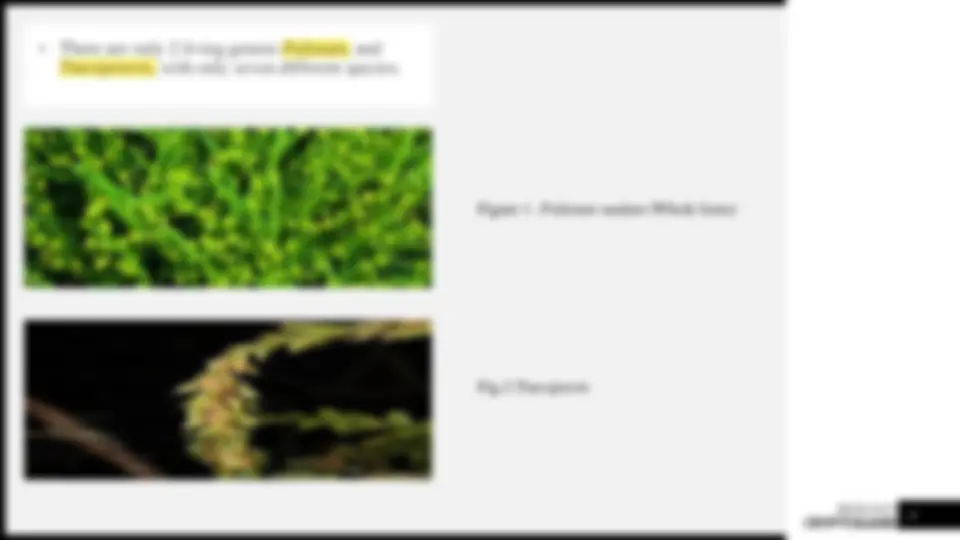
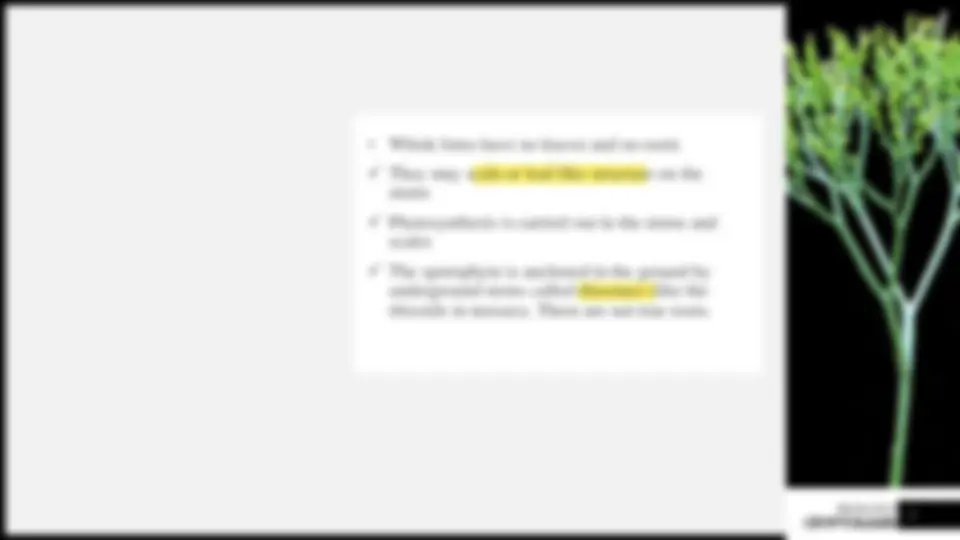



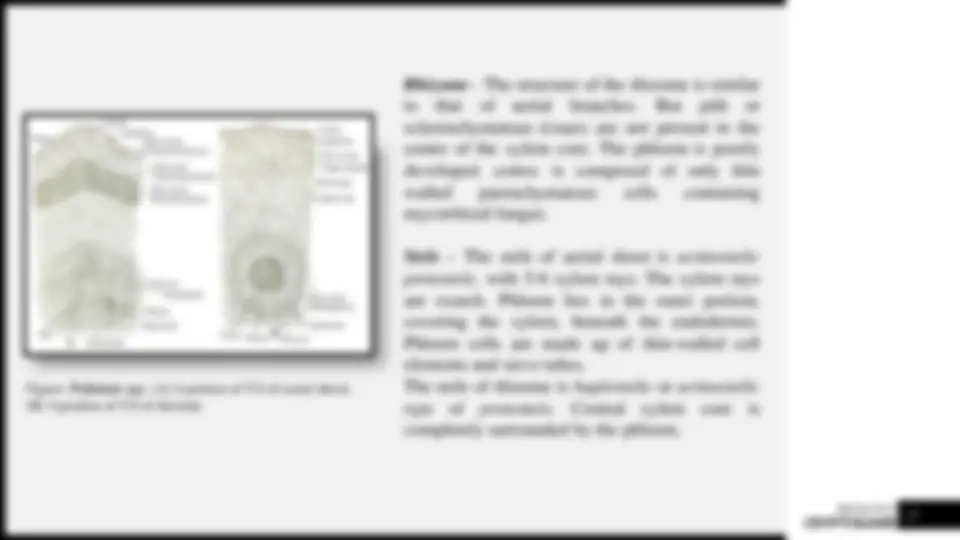
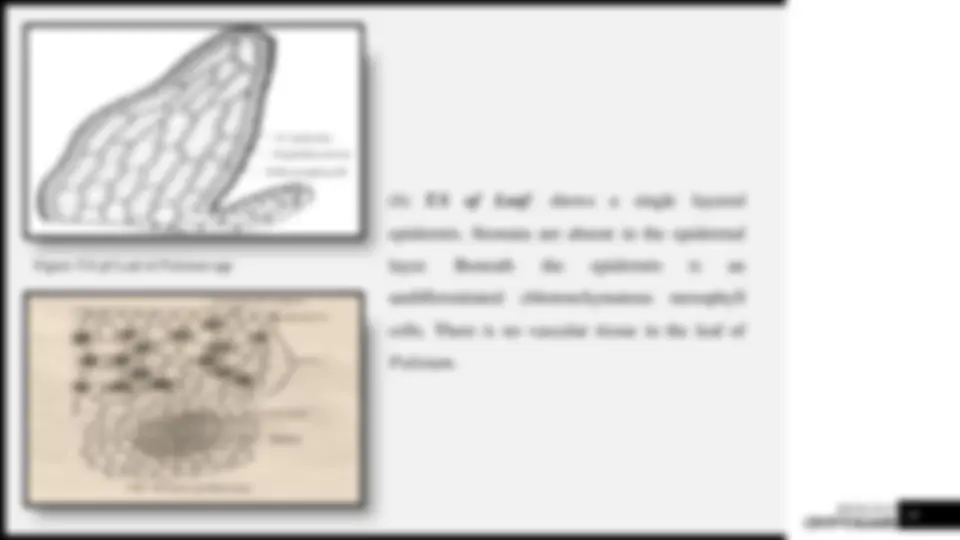
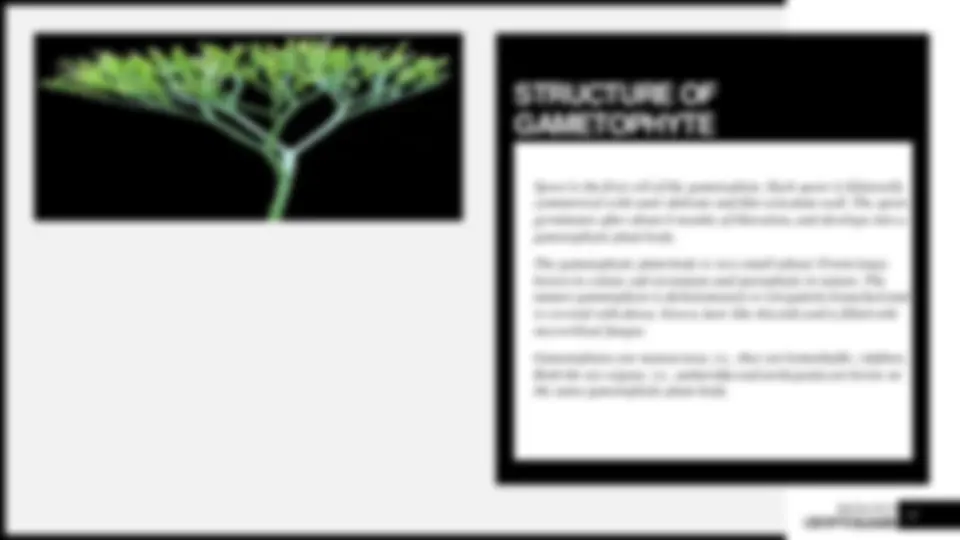
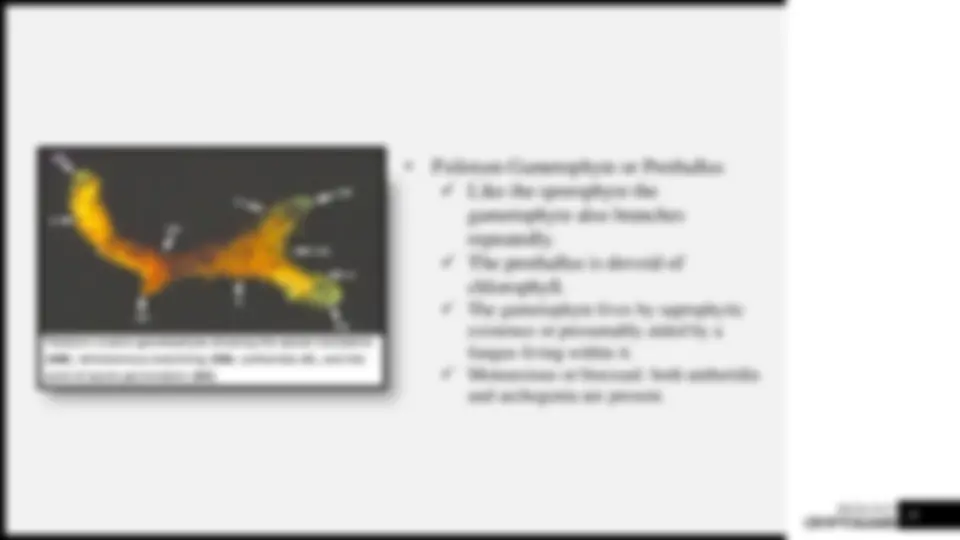
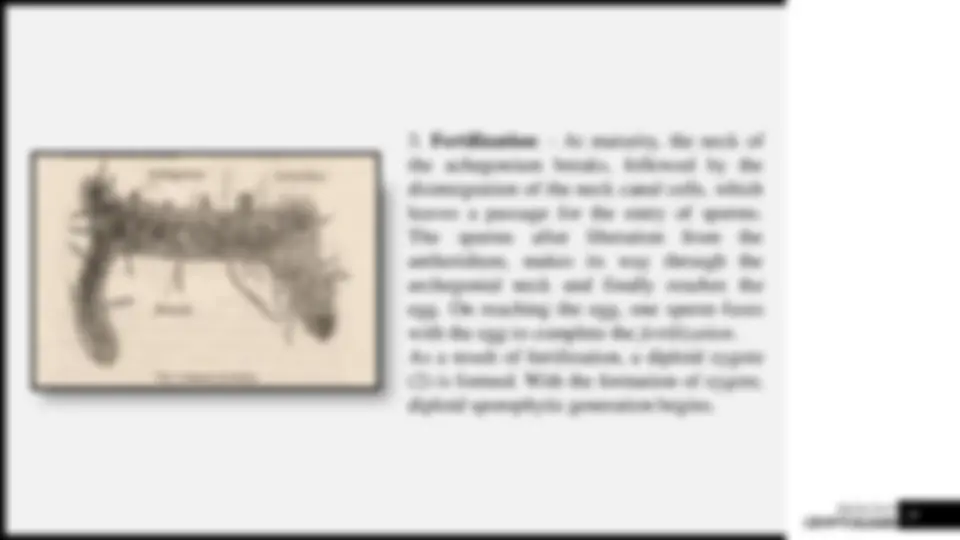
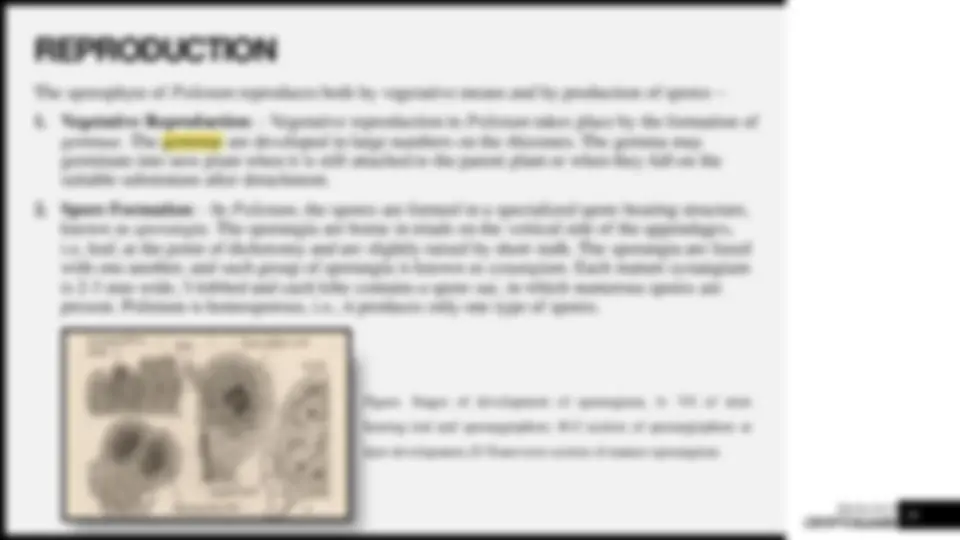
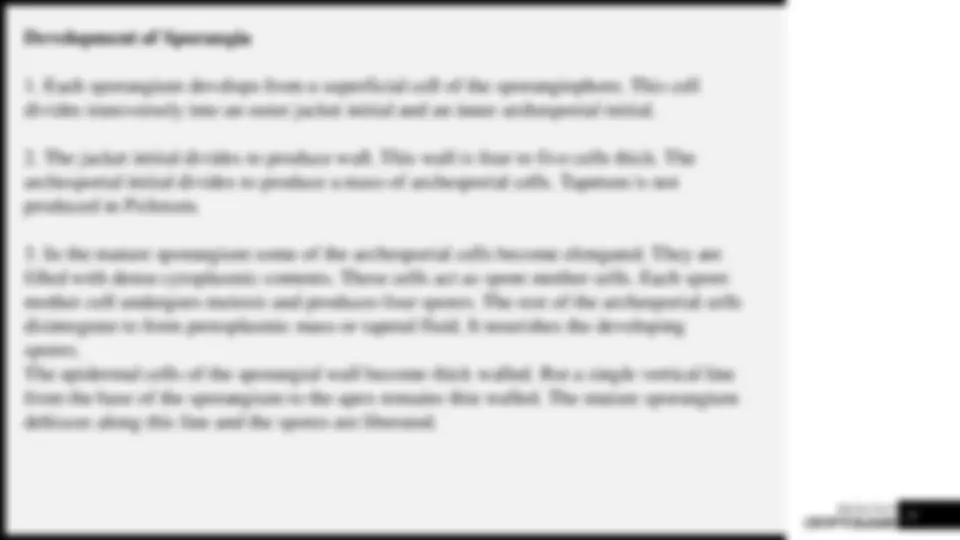
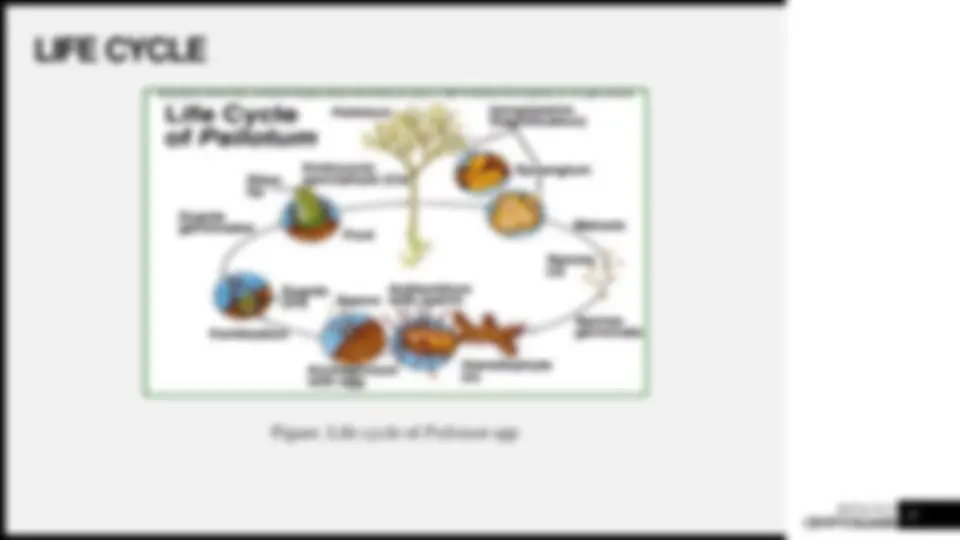



Study with the several resources on Docsity

Earn points by helping other students or get them with a premium plan


Prepare for your exams
Study with the several resources on Docsity

Earn points to download
Earn points by helping other students or get them with a premium plan
Community
Ask the community for help and clear up your study doubts
Discover the best universities in your country according to Docsity users
Free resources
Download our free guides on studying techniques, anxiety management strategies, and thesis advice from Docsity tutors
Classification of Pteridophytes-Psilophytes
Typology: Study notes
1 / 23

This page cannot be seen from the preview
Don't miss anything!
















one of the most primitive group of vascular plants.
2 Tracheophytes are vascular plants because of the existence of vascular tissues i.e., xylem and phloem. Tracheophyta are further divided into four main groups: Psilopsida, Lycopsida, Sphenopsida and Pteropsida. Psilopsida is a subdivision of Tracheophyta comprising vascular plants with no roots, leaves only partially differentiated or lacking, no leaf traces, a usually protostelic vascular cylinder, and the sporangia merely terminal enlargements of the stem. TOPIC OVERVIEW Figure. Psilopsida ( Psilotum )
4
Tippo ( 1942 ) called the 'groups' of Eames as sub-phylum. Wardlaw ( 1955 ) divided the Pteridophytes into four divisions Sub-division – Psilopsida Class: Psilophytineae Order 1. Psilotales Order 2. Psilophytales
Class - Psilophytineae Order 1. Psilophytales Order 2. Psilotales
10 The genus Psilotum is widely distributes in the tropical and sub- tropical regions of both Northern and Southern hemisphere, (e.g. – P.nudum and P. flaccidium) [insert image of the species].The plant is xerophytic in nature and grows in various habitats from very dry to moist places. They grows on soil where humus is abundantly available. Also, they found to grow on tree ferns and palms. P. nudum is found to grow in India, and hence it is the only Indian species. HABITAT
GENERAL STRUCTURE Class Psilopsida 11
1. External structure : - The sporophyte, i.e., the plant body is well differentiated into – a slender rootless rhizome and an aerial shoot. Rhizome – The rhizome contains a mycorrhizal fungus and is covered with hair like rhizoids. The branching of the rhizome is dichotomous. Some of the dichotomy may become erect and develop into green aerial leafy shoot. Aerial shoot – are either pendent (in case of epiphytic condition), or erect (in case of terrestrial condition). The branching of aerial shoot is strictly dichotomous. Leaves – The aerial branches bear on the upper part, small, scale like appandages, i.e., leaves, arranged in 2 - 3 rows. Sporangia – The sporangia are borne in triads. They have very short stalks. They are borne in the axils of small bifid leaves on the aerial branches. This triad of sporangia is called a synangium. The two lobes of the leaf are closely united with the synangium.
13 Rhizome - The structure of the rhizome is similar to that of aerial branches. But pith or sclerenchymatous tissues are not present in the centre of the xylem core. The phloem is poorly developed. cortex is composed of only thin walled parenchymatous cells containing mycorrhizal fungus. Stele – The stele of aerial shoot is actinostelic protostele , with 5 - 6 xylem rays. The xylem rays are exarch. Phloem lies in the outer portion, covering the xylem, beneath the endodermis. Phloem cells are made up of thin-walled cell elements and sieve tubes. The stele of rhizome is haplostelic or actinostelic type of protostele. Central xylem core is completely surrounded by the phloem. Figure: Psilotum spp. (A) A portion of T.S of aerial shoot; (B) A portion of T.S of rhizome
14 (b) T.S of Leaf : shows a single layered epidermis. Stomata are absent in the epidermal layer. Beneath the epidermis is an undifferentiated chlorenchymatous mesophyll cells. There is no vascular tissue in the leaf of Psilotum. Figure: T.S pf Leaf of Psilotum spp
16 Antheridia : - Antheridia begin to develop on the Gametophytes are monoecious, i.e., they are homothallic. (define). Both the sex organs, i.e., antheridia and archegonia are borne on the same gametophytic plant body.
17
19
REPRODUCTION 20 The sporophyte of Psilotum reproduces both by vegetative means and by production of spores –
1. Vegetative Reproduction : - Vegetative reproduction in Psilotum takes place by the formation of gemmae. The gemmae are developed in large numbers on the rhizomes. The gemma may germinate into new plant when it is still attached to the parent plant or when they fall on the suitable substratum after detachment. 2. Spore Formation : - In Psilotum , the spores are formed in a specialized spore bearing structure, known as sporangia. The sporangia are borne in triads on the vertical side of the appendages, i.e, leaf, at the point of dichotomy and are slightly raised by short stalk. The sporangia are fused with one another, and such group of sporangia is known as synangium. Each mature synangium is 2-3 mm wide, 3-lobbed and each lobe contains a spore sac, in which numerous spores are present. Psilotum is homosporous, i.e., it produces only one type of spores. Figure. Stages of development of sporangium, A- VS of stem bearing leaf and sporangiophore. B-C-section of sporangiophore at later development, D-Transverse section of mature sporangium.